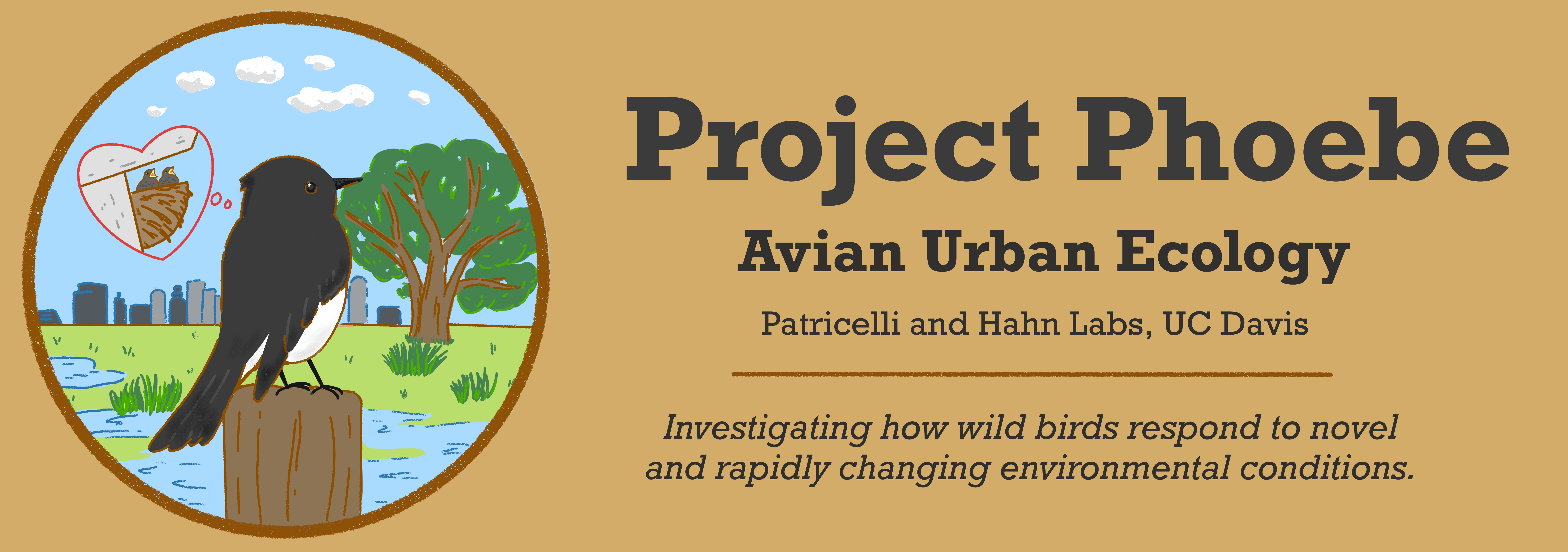Creature Feature: Black Phoebe
The following about our favorite flycatcher originally appeared in the UC Davis Ethogram’s Creature Feature segment on April 27, 2023. Hope you enjoy! -Jacob
On a warm spring day, I’m hiking across the rolling hills of Northern California when I come across a quiet pond. As I tramp closer to the reedy bank, a small dragonfly zips past and pauses, hovering in the air a few feet from me.
Then, out of nowhere . . .
Cheep! In a blur of black feathers, a black phoebe lunges from the nearby cattails, swooping low over water and grass. The black-and-white bird twists acrobatically through the air, using her tail feathers to rudder hard to the left in pursuit of her target. When she alights back on her perch a second later, an insect is clamped firmly in her beak. She tilts her head to the side and flicks her tail. It looks like she is eyeing me.
“Wow!” I say. “You’re here, too.”
“Cheep!” she calls again, and flies off. It won’t be long before I encounter another phoebe. I hear them sing in the mornings near my place in Davis and atop lecture halls on campus. No matter where I go, I can always be sure I’ll find that little black bird.

The black phoebe (scientific name: Sayornis nigricans) is a small insect-catching bird that lives near rivers, streams, and increasingly, human habitats. All over the Western US and Mexico, Black phoebes make their homes wherever water and flying insects are handy. They build cup-shaped nests out of mud that look out on rocky overhangs, bridges, and all kinds of elevated surfaces. Male and female phoebes work as a pair to raise a clutch of 1–6 eggs, and can raise as many as 3 broods in a single year (Wolf 1997).
This charismatic bird is abundant in backyards, natural areas, and cities alike, perching on low branches and fences and making its telltale call. In fact, you can hear black phoebes calling anywhere from the rocky cliffs surrounding San Francisco to the heart of agricultural farmland in the Central Valley. This species seems much more flexible than many of its close cousins when it comes to living near humans.
It begs the question: why? Why is this particular flycatcher (a group of birds named for their insect-focused diet) so common in cities, where people use pesticides and other controls to get rid of insects? How does it navigate the suburbs, where homes are often built far from water? So far, there is mostly only anecdotal evidence. Instead of riverbeds, its mud cup nests appear on park gazebos and other wooden structures– even houses. Black phoebes will scoop up mud created by our sprinkler systems. Some people report that these birds snag insects buzzing above garbage bins, or rising up from carefully-mowed lawns.

Animals that live near humans encounter both danger and opportunity. Black phoebes might be like many other city-dwelling species, which tend to be assertive, adventurous, and willing to try out new sources of food and shelter (Caspi et al. 2022). Could it be their behavior that allows phoebes to succeed where other flycatchers struggle? Is there more to this species’ ability to cope with humans than meets the eye? For now, nobody knows for sure.
It can be easy to take backyard birds for granted. The adventurous black phoebe may be common, but it’s precisely how common this flycatcher is–and how it seems not only to survive but thrive in many different environments–that makes it so unique. In a bird that swoops through cities, rivers, woodlands and farmlands alike, there is a mystery just waiting to be uncovered.


